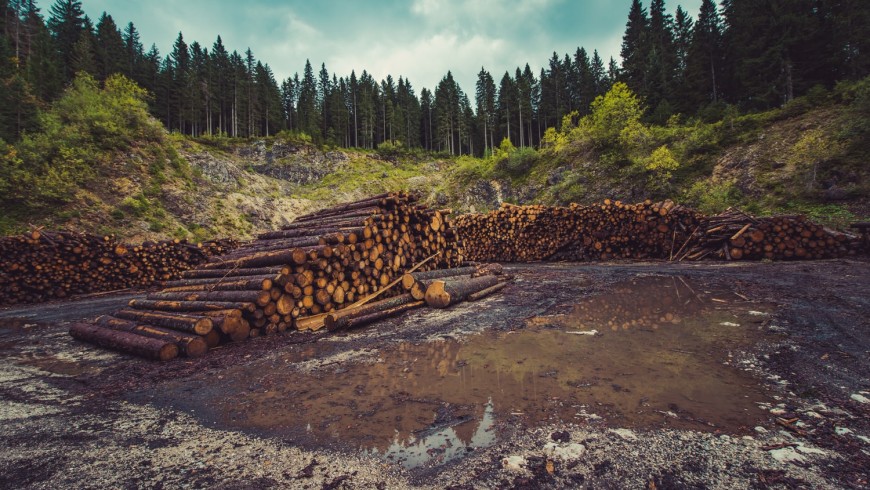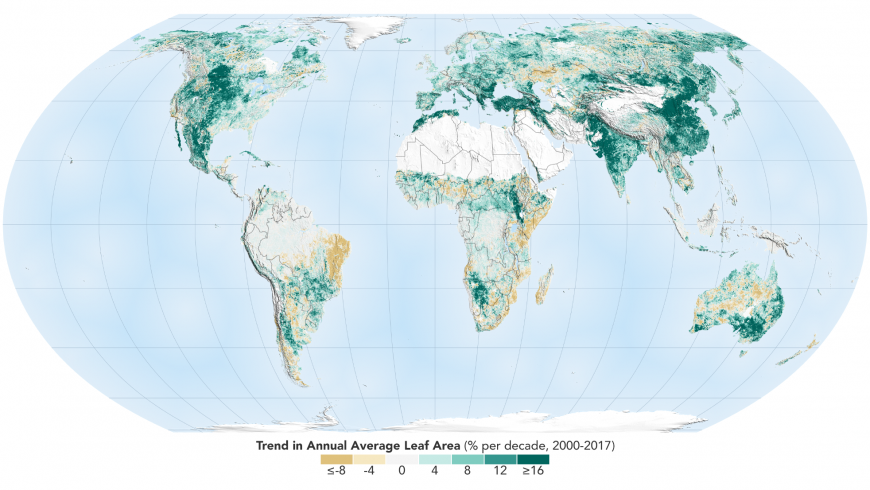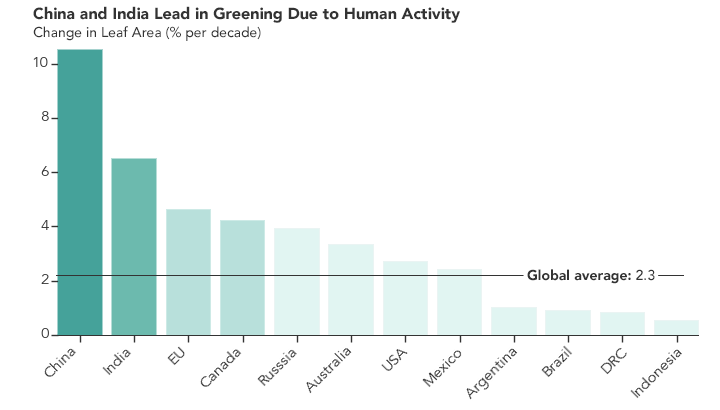Despite the continuous news on deforestation, raging wildfires, and land exploitation, the Earth seems greener than it was 20 years ago, says NASA. For a large part of this successful reforestation, two countries, China and India should be praised. But what have these two nations done that we can learn from?
Around 15% of the world’s total global carbon emission is caused by deforestation. The increasing demand for paper, urbanization mining and farming purposes, causing the forests to be cleared up all around the world. These human activities are directly contributing to climate change, not to mention the harm caused in the wildlife, and ecosystems directly connected to the forests, like the habitats in rivers and lakes. Illegal deforestation is particularly hard to control in countries, like Brazil, that’s sheer scale and size makes it difficult to police the destructive pursuits.

Even though the massive deforestation that is raging all over the world, NASA has some good news. The Earth appears to have more green areas than it had 20 years ago. It was recently published in the journal, Nature Sustainability, that NASA had compared satellite data from the mid-90s to today. They have used Moderate Resolution Imaging Spectroradiometer (MODIS) to get a detailed picture of how the world’s global vegetation has evolved over time. This technique provided up to 500-meter resolution, four shots of every place on Earth, every day for the last 20 years.

The greening phenomenon was first noticed by a group of researchers from Boston University, but they were uncertain about whether if its due to human activity or the warming planet and the wetter climate initiated more plants to grow in the northern forests. After further investigation with NASA’s two orbiting MODIS satellites, it became clear, that the two million square miles of extra green leaf area per year are indeed primarily caused by human action.
In contrast to the perception of China and India being among the leaders in exploiting land over economic gain, they have both outsized their contributions. Collectively they are accounted for one-third of the greening in the past decades. China’s effort to reduce the effects of soil erosion, air pollution made the country to conserve and expand forests on an accelerated scale. Both China and India have increased their annual total green leaf area, thanks to their food production practices, where they made it possible to replant and harvest their fields several times a year in order to serve their large populations. However, this intensive agricultural practice may be short-lived, as the availability of groundwater may get affected by climate change.
India is also great at continuously breaking the world records in planting trees. In 2017, 800,000 Indians planted 50 million tree saplings in just 24 hours.

“…, now that we know direct human influence is a key driver of the greening Earth, we need to factor this into our climate models,” said Rama Nemani, a research scientist from NASA’s Ames Research Center. “This will help scientists make better predictions about the behavior of different Earth systems, which will help countries make better decisions about how and when to take action.”
The research has also pointed out how the gain in the greenness still does not offset the damage from losing natural vegetation at the tropical regions, such as the Amazon, where the consequences of losing biodiversity remain, without further actions taken. Nevertheless, the researchers at NASA see a positive message from their findings. “Once people realize there’s a problem, they tend to fix it,” he said. “In the 70s and 80s in India and China, the situation around vegetation loss wasn’t good; in the 90s, people realized it; and today things have improved. Humans are incredibly resilient. That’s what we see in the satellite data.”

Reforestation continues to be a significant issue in specific areas, especially in high altitudes and not accessible regions. To solve the problem, Australian scientist Dr. Susan Graham has developed a pair of drones that have the ability to plant trees in areas otherwise inaccessible.
The drones operate in pairs, one scans the area of land searching for suitable conditions, determining optimal planting areas. While the second one is then sent on a specific flight path, mapped by the first drone. It can carry up to 150 seedpods that are designed to fall below. The casing around the seed breaks down, giving away a highly nutritious soil for the plant to flourish in. The pods are designed to carry multiple species of trees and will break down according to individual seed’s germination period. Thanks to the technological advancements, companies like DroneSeed and BioCarbon Engineering will soon be able to plant nearly 100,000 trees per day in areas, where rehabilitation is needed, but doing it by hand or by ground-based machines is impossible.
Check out the future of the reforestation here, and let us know what you think:
Cover image: Photo by Magnus Lindvall on Unsplash
Source: NASA Ames: Human Activity in China and India Dominates the Greening of Earth, NASA Study Shows




